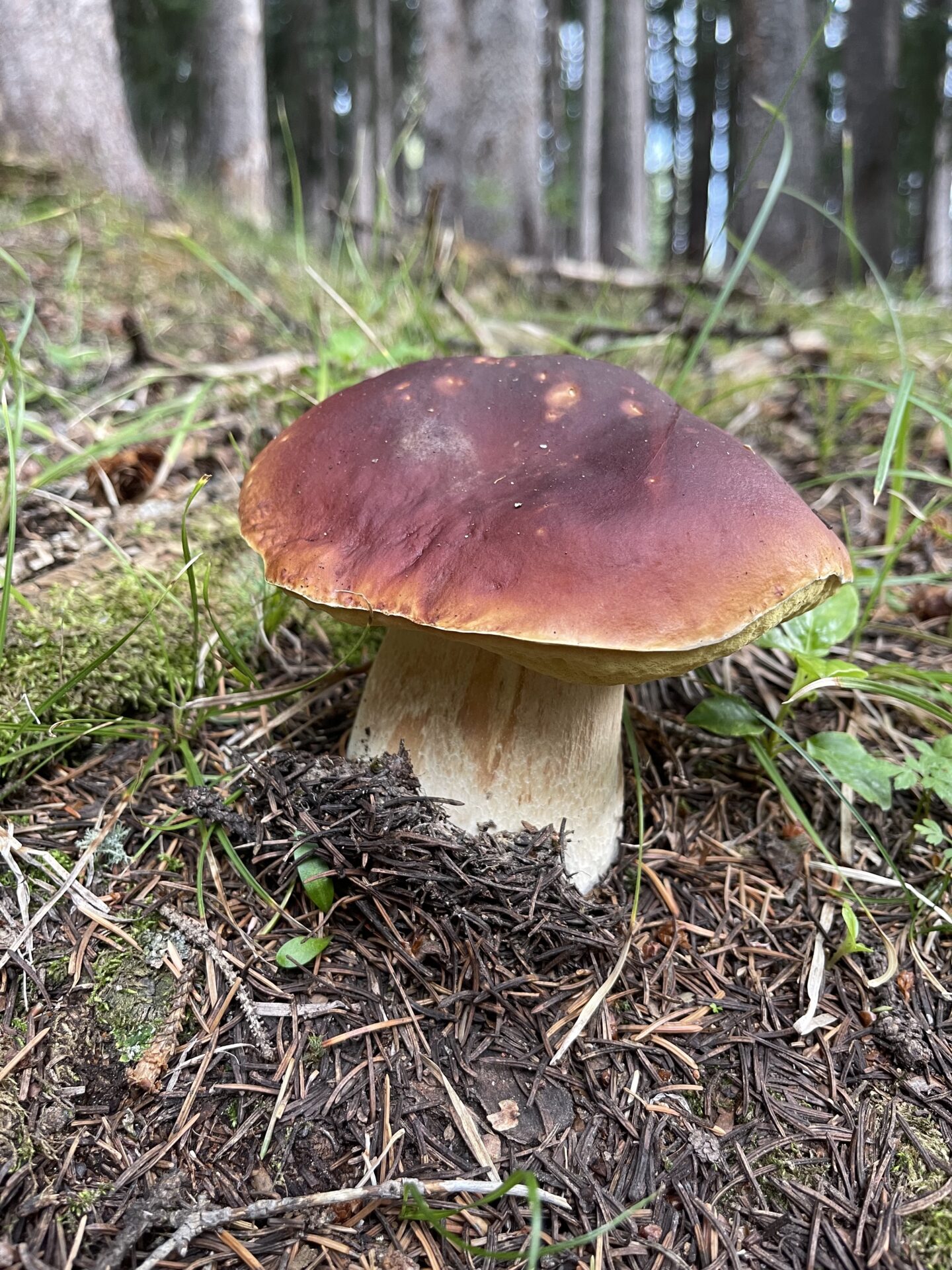The biggest “threat” of getting into mushroom foraging may not be poisonous species; the most common risk that seems to come with foraging involves its addictive nature.

Photos courtesy of Kristen Blizzard — HAWK’S WINGS Sarcodon imbricatus
Kristen and Trent Blizzard began foraging for mushrooms in the Vail Valley about 10 years ago, and these days, their “addiction” has taken them into the forests of Wisconsin and the Pacific Northwest. They even wrote a book, published in 2020, titled Wild Mushrooms: A Cookbook and Foraging Guide, which provides “everything you need to know to make mushrooming a lifestyle choice, from finding and storing to preserving and preparing common and unusual species,” according to the book description.
“This obsession has totally taken root, and it grows,” Kristen Blizzard believes. “It feels like, in a way, some sort of DNA switch flips on, igniting an ancestral hunter-gatherer gene. Part of it is about the hunt, and part of it is the thrill of being outside and seeing the connectedness in nature, and all of it turns into this passion. This long-lost genetic code is driving you to become a person who collects food and pre-serves it for the long winter, and at the same time, it’s a treasure hunt, like an Easter egg hunt for adults.”
The itch can begin with finding and identifying your first mushroom in the forest, or it can nip you when you find an amazing stash.
Kristen Blizzard was exposed to foraging through Walking Mountain Science Center, then met Trent, who had peripheral experience through friends. The couple attended the Telluride Mushroom Festival and began foraging together, and then “had one of those days where you hit the motherload, and it kinda creeps in and takes over and becomes an obsession,” Kristen Blizzard shares.
Of course, sometimes, learning from friends involves rites of passage. Trent Blizzard’s friend took him on a 10-mile hike in the Glenwood area, only to return to the car and say, “Let’s check here.” Sure enough, they found a massive amount of mushrooms about 500 feet away. Trent called Kristen, and they continued to hunt for several hours.
“There’s a chemical dopamine response that triggers your brain, and you want to find it again and again,” says Trent Blizzard.

KRISTEN AND TRENT BIZZARD holding morels found in a local burn (Morchella species), they refer to
them as “burn morels.”
And oftentimes, mushrooms are like little tricksters in the forest. You may hunt all day for them only to find them close to where you started or simply at the end of the day.
Krista Schoenberg and her husband also got hooked their second year of for-aging; her inspiration began working at Beano’s Cabin under a chef that foraged for all kinds of edibles in the forest. Then, she and her husband got hooked when they found a field of mushrooms so abundant that they filled their backpack, which was so heavy and full they had to take turns carrying it down the trail.
Schoenberg loves exploring the forest floor, slowly meandering, a method of “wandering and taking it all in,” she says.
